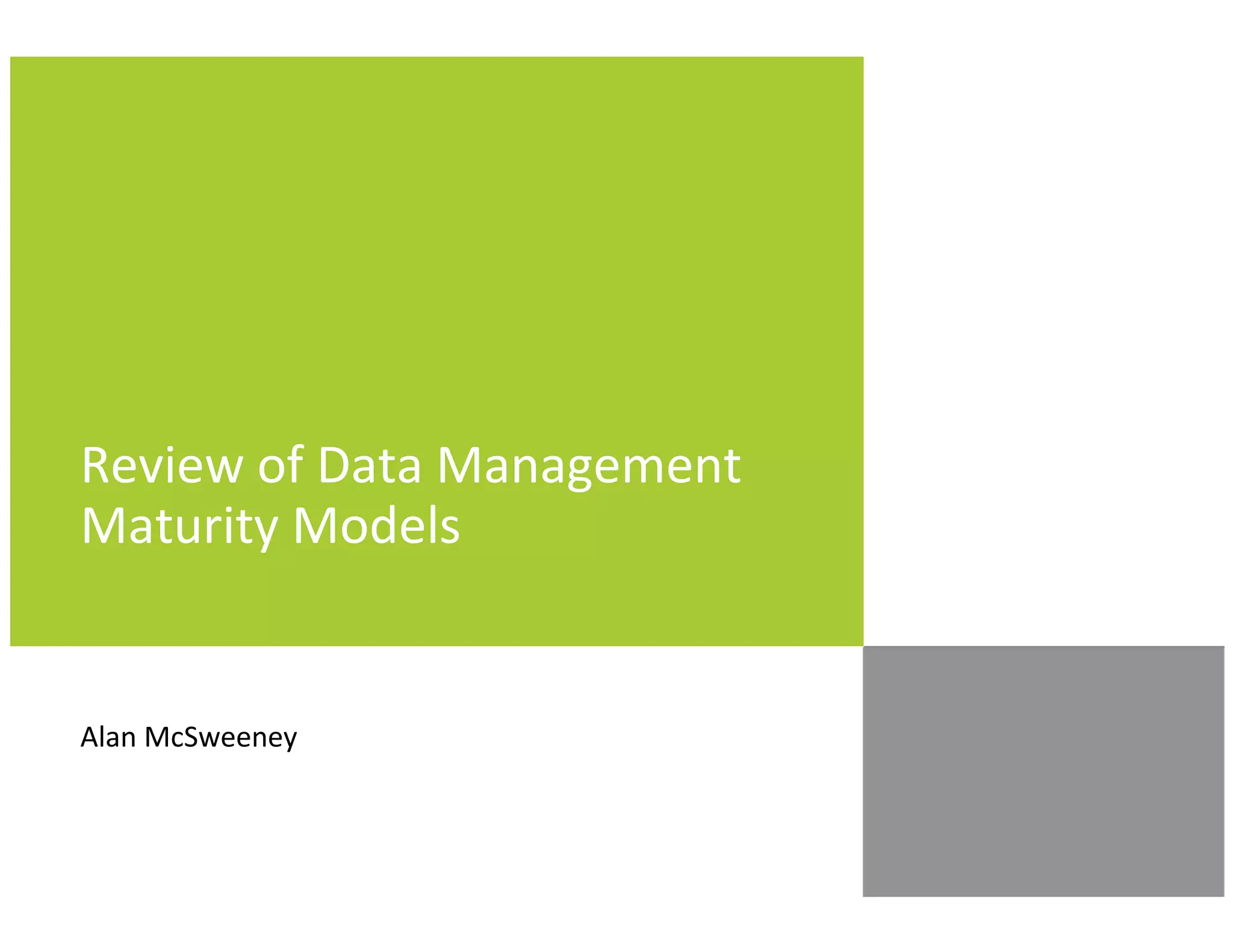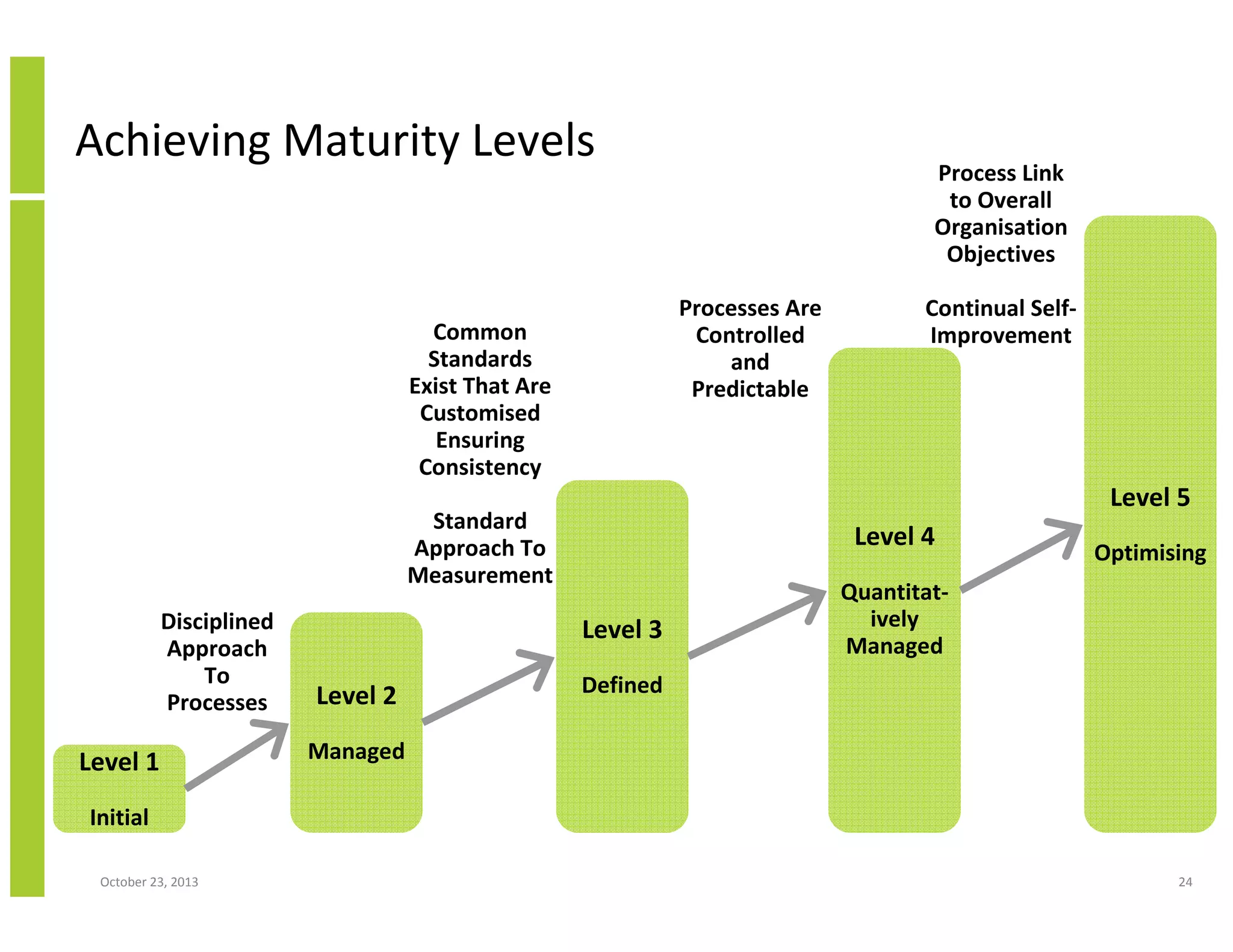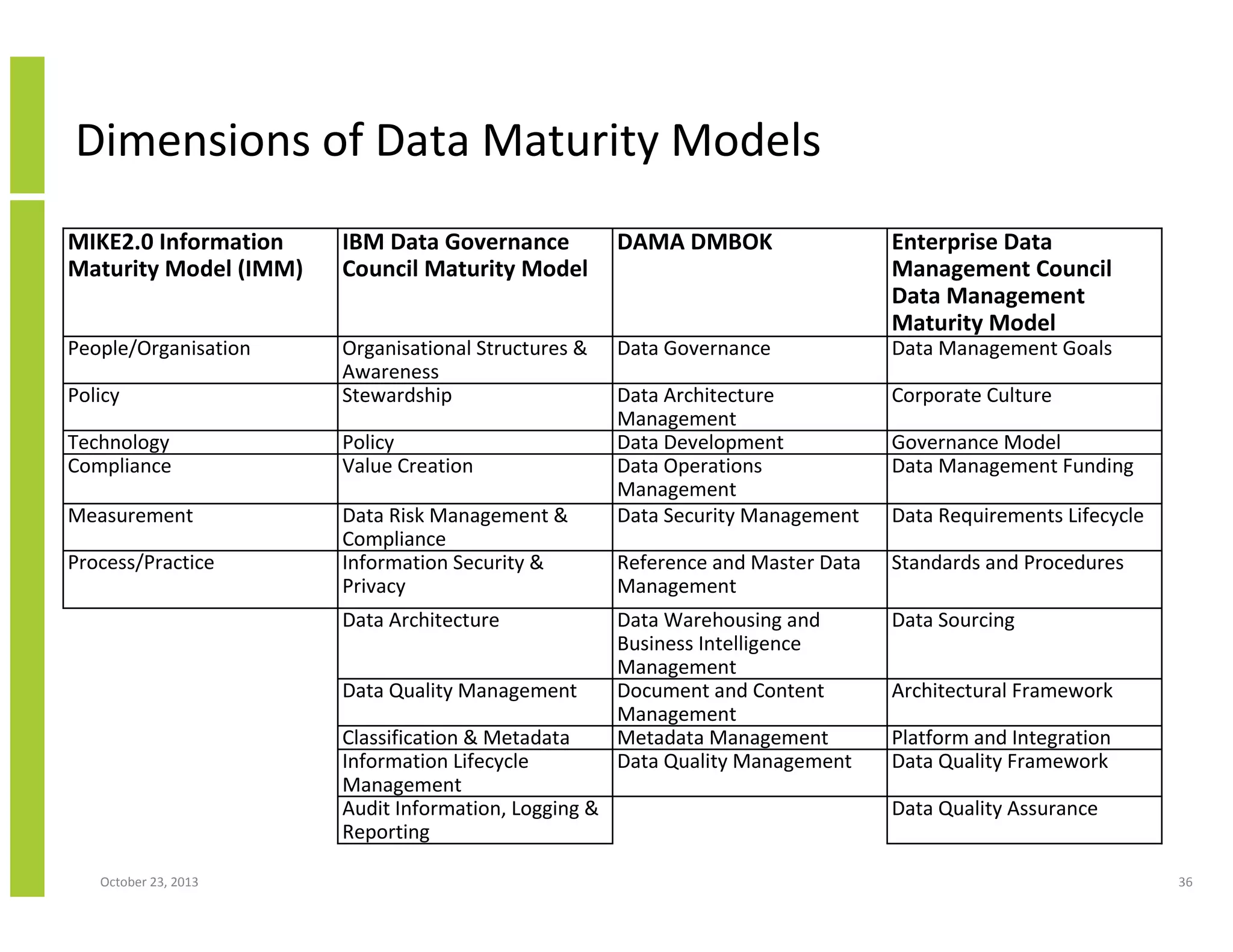This document reviews several existing data management maturity models to identify characteristics of an effective model. It discusses maturity models in general and how they aim to measure the maturity of processes. The document reviews ISO/IEC 15504, the original maturity model standard, outlining its defined structure and relationship between the reference model and assessment model. It discusses how maturity levels and capability levels are used to characterize process maturity. The document also looks at issues with maturity models and how they can be improved.














































